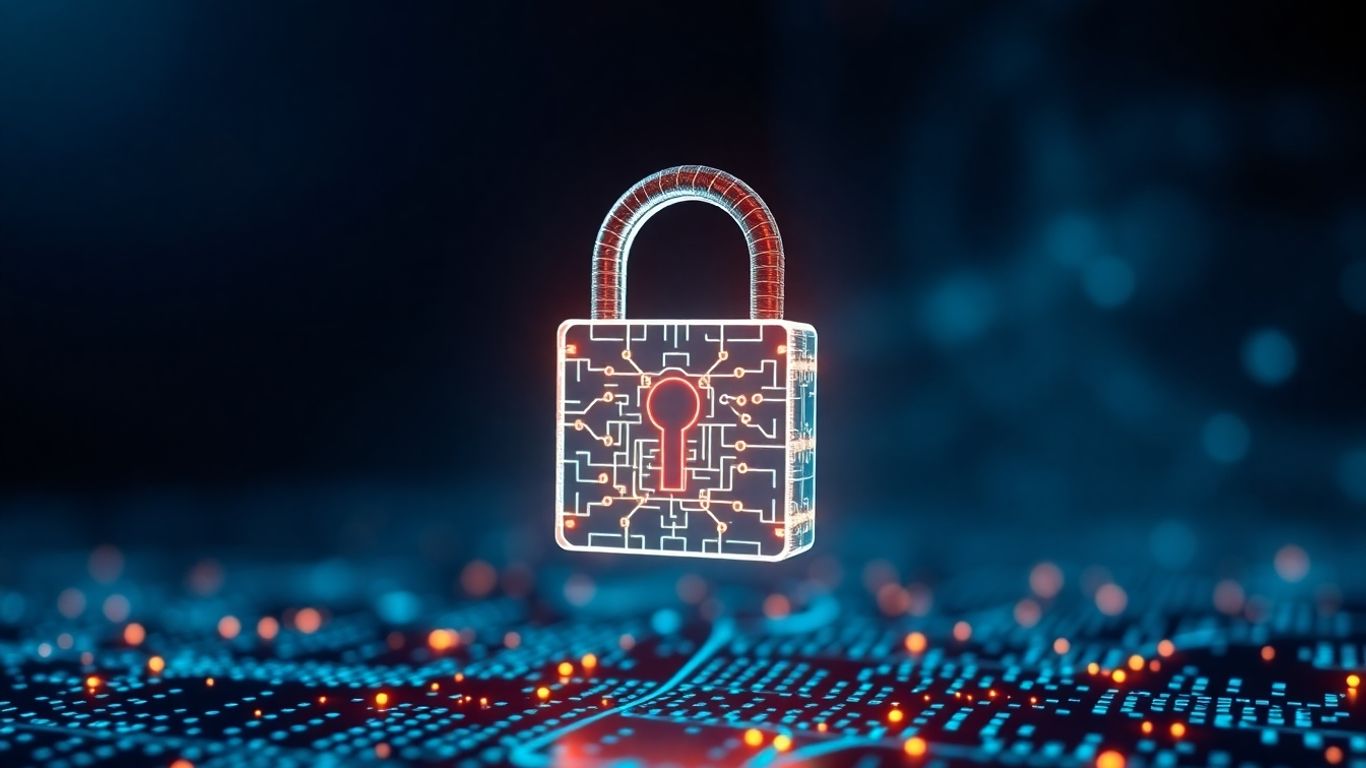[ newsletter ]
Stay ahead of Web3 threats—subscribe to our newsletter for the latest in blockchain security insights and updates.
Thank you! Your submission has been received!
Oops! Something went wrong. Please try again.
Mastering blockchain security audits in 2025: Essential guide to frameworks, tools, compliance, and best practices for robust protection.





The world of blockchain is moving fast, and keeping things safe is a big deal. We're talking about making sure digital money and apps don't get messed with. This guide is all about how to check if blockchain projects are secure, especially in 2025. It's not just for the tech wizards; anyone involved needs to know the basics of blockchain security audits. We'll cover what you need to know, from understanding the tech to picking the right people to help you out. Let's get into it.

Before you can even think about finding security holes, you really need to get a handle on how blockchains and smart contracts actually work. It’s not enough to just know they exist; you have to understand the nuts and bolts. This means digging into things like consensus mechanisms, how transactions are validated, and the lifecycle of a smart contract from when it's written to when it's running on the network. Think of it like learning the rules of a game before you try to win it. You can't secure something if you don't know how it's supposed to work in the first place. It’s like trying to fix a car engine without knowing what an engine does.
Once you have the basics down, you can start looking at security. This involves learning about common attack vectors that target smart contracts. Things like reentrancy attacks, integer overflows, and unchecked external calls are pretty standard. You also need to understand how different components of a Web3 application interact, like oracles and bridges, because vulnerabilities can exist in any of them. Knowing the common pitfalls is half the battle.
Security in Web3 isn't just about finding bugs; it's about understanding the entire ecosystem and how different parts can be exploited.
Luckily, you don't have to figure all this out on your own. There are tons of resources out there. Online courses can give you a structured path. Reading audit reports from established firms is also super helpful to see what experienced auditors look for. Don't forget about community resources and forums where people discuss new vulnerabilities and techniques. It’s a mix of formal learning and just soaking up information from others in the space.
The more you learn and practice, the better you'll become at spotting potential issues before they become major problems.
So, you want to audit smart contracts? It's not just about reading code, though that's a big part of it. You need the right gear and know-how to actually find the weak spots. Think of it like being a detective, but instead of fingerprints, you're looking for logic flaws and vulnerabilities. Having the right set of tools and a solid approach makes all the difference.
When you're diving into a smart contract, you'll want a few things in your toolkit. Static analysis tools can scan your code without running it, looking for common patterns that often lead to trouble. Dynamic analysis tools, on the other hand, actually run the code, letting you see how it behaves under different conditions. Fuzzing is another technique where you throw a bunch of random inputs at the contract to see if it breaks.
Here's a quick rundown of what you might use:
You can't secure something if you don't know how it's supposed to work in the first place. It’s like trying to fix a car engine without knowing what an engine does. Understanding the intended functionality is half the battle.
Security isn't just about one thing; it's about layers. You don't just check the smart contract code itself. You also need to think about how it interacts with other parts of the system. This includes looking at how data gets into the contract (oracles), how it communicates with other blockchains (bridges), and how access is managed (like multi-signature wallets).
Common attack vectors to watch out for include:
An audit isn't just a quick look-see. It needs a structured process. This usually starts with understanding the project's goals and scope. Then comes the actual testing, which involves various techniques. After finding issues, you need to document them clearly and provide actionable advice for fixing them. Finally, a good audit includes follow-up to make sure the fixes actually work and don't introduce new problems.
Key stages of a robust audit framework:
Alright, let's talk about compliance in the blockchain world for 2025. It's not just a suggestion anymore; it's pretty much a requirement if you want to stay in the game. Regulators are really cracking down, and the fines for not playing by the rules have gone way up. We're seeing billions in penalties, which is a huge jump from just a year or two ago. This means that if you're building anything on the blockchain, you've got to pay attention to the rules.
So, what does this actually look like on the ground? It's about more than just checking if your code is secure. You need to think about how your project fits into existing financial laws, especially if you're dealing with tokens that could be seen as securities or if you're offering services that look like investment advice. For things like DeFi, you might need to register offerings or follow rules for yield farming. NFTs have their own set of headaches, dealing with things like intellectual property and making sure high-value transactions don't become a playground for money laundering. And with all these new ways blockchains talk to each other (cross-chain stuff), you have to make sure the bridges between them are secure too.
The financial hit from not being compliant can be massive, way beyond just the fines. Think lost trust, operations grinding to a halt, and big legal bills. It's way cheaper to get it right from the start.
Luckily, technology can help. Regulators themselves are using AI and data analysis to spot shady activity, so you'll probably need to do the same. This means using tools that can watch transactions in real-time, flag anything suspicious, and help with things like Know Your Customer (KYC) checks. Blockchain analytics tools can trace transactions and give you a risk score, which is pretty handy. Some compliance checks can even be built right into smart contracts, making them run automatically.
Things aren't slowing down on the regulatory front. We're seeing new laws coming into effect, like the EU AI Act, which will bring more fines for AI-related issues. Expect more global cooperation between regulators and rules that are specifically designed for things like DeFi and NFTs. There's also a growing focus on environmental standards for blockchain networks and better consumer protection. The good news is that 2025 might be the year where we get more clarity, which could help new blockchain projects really take off. Building compliance into your project from day one is the smartest move you can make. It's not just about avoiding trouble; it's about building trust and opening doors to new markets.
So, you've done the groundwork, you've got your tools, and you're ready to really get into auditing. That's awesome. But just finding bugs isn't the whole picture, right? To do a truly solid job, you need to be organized and work well with others. It's about making sure the project you're looking at is as safe as possible, not just for now, but for the long haul. Think of it like building a really secure vault – you need to check every lock, every hinge, and make sure the blueprints are perfect.
When you're auditing, keeping good notes is super important. You need to track everything you do, every test you run, and every finding you make. This isn't just for your own memory; it's so you can explain exactly what you did and why to the project team and anyone else who needs to know. A clear audit trail shows your process and helps build trust. A well-documented audit is a defensible audit.
Here’s a quick rundown of what to record:
Nobody knows everything, especially in a field as complicated as Web3. Don't be afraid to ask for help or bounce ideas off other people. If you're stuck on a tricky smart contract issue, talking to someone who specializes in that particular area can make a huge difference. It’s also good to work with the project’s own developers; they know their code best and can help you understand the intended behavior.
Your ultimate goal is to protect the assets and data managed by the smart contracts. This means going beyond just finding bugs. You need to think about the overall security posture of the project. Are there good practices in place for managing private keys? Is the deployment process secure? Are there plans for ongoing monitoring after the audit is complete? Thinking about these broader security aspects helps make sure the project is truly safe.
Protecting digital assets requires a proactive and multi-faceted approach. It's not enough to simply identify vulnerabilities; auditors must also consider the operational security practices surrounding the project, including key management, secure deployment pipelines, and continuous monitoring strategies to maintain a strong security posture over time.
Consider these points:

The blockchain world moves fast, and staying ahead of the curve in security is a constant challenge. It’s not enough to know the basics; you have to keep learning. Think of it like trying to keep up with the latest tech gadgets – there’s always something new. This means actively seeking out new information and practicing your skills regularly to remain sharp.
Reading through security audit reports from other projects is a goldmine for learning. These reports often detail the vulnerabilities found, how they were exploited, and the steps taken to fix them. It’s a practical way to see real-world problems and solutions. Pay attention to the types of bugs that keep popping up across different projects. Are reentrancy attacks still a big deal? Are there new patterns in access control failures? Looking at these reports helps you build a mental library of potential issues.
Web3 communities are usually pretty active online. Joining forums, Discord servers, or Telegram groups dedicated to smart contract security can be super helpful. You can ask questions, share your findings, and learn from others who are in the trenches. Often, experienced auditors will share insights or discuss new attack vectors. It’s a more informal way to learn, but it can be incredibly effective for staying current.
Many platforms offer 'Capture The Flag' (CTF) challenges specifically for smart contracts. These are like puzzles or games designed to test your ability to find and exploit vulnerabilities in simulated smart contract environments. They’re a fantastic way to get hands-on experience without the risk of damaging live systems. Success in these challenges often means you’re developing the practical skills needed for real audits. It’s a good idea to try and tackle a few of these each month to keep your skills honed.
Staying current in Web3 auditing isn't a one-time task; it's an ongoing process. Regularly reviewing past incidents, participating in community discussions, and actively engaging with new challenges are key to maintaining your edge in this dynamic field.
Picking the right company to check your blockchain project's security is a big deal. It's not just about finding bugs; it's about making sure your project is solid and trustworthy for everyone involved. You want a partner who really gets what you're building and can spot potential problems before they become actual disasters.
When you're looking around, there are a few key things to keep in mind. Think of it like hiring someone for a really important job – you want to make sure they're qualified and a good fit.
It's really helpful if the audit firm has a history of working within your specific niche. If you're building a GameFi platform, an auditor who has experience with game mechanics and tokenomics in that space will likely find issues you might not have considered. Similarly, if you're dealing with complex DeFi yield farming strategies, you'll want auditors who understand those financial instruments and their associated risks.
A firm's past performance, often shown through case studies or a list of previous clients, gives you a good idea of their capabilities. Don't be afraid to ask for references or examples of their work.
Every project is unique, and a one-size-fits-all audit approach might miss critical vulnerabilities. Look for a partner whose auditing methodology is robust and adaptable. They should be able to tailor their tests to your project's specific architecture, features, and potential threat landscape. This might involve:
Ultimately, the goal is to find a partner who acts as an extension of your own security team, providing thorough analysis and actionable insights to safeguard your project.
So, we've gone over a bunch of stuff about keeping Web3 safe. It’s a big deal, right? With all the new tech popping up, making sure things are secure is super important. Remember to get the basics down, know what can go wrong, and use the right tools. Keep learning because this field changes fast. By staying curious and practicing what we talked about, you'll be much better prepared to handle whatever comes your way in the world of blockchain security. It’s a journey, for sure, but a really interesting one.
Think of a blockchain security audit like a detective checking a digital treasure chest. We carefully examine the special computer code, called smart contracts, that run on blockchains. Our main goal is to find any hidden flaws or weak spots that could be used by bad actors to steal digital money or cause trouble.
Not necessarily, especially when you're starting out! While knowing how to code really helps, you can begin by learning the basics of how blockchains and smart contracts work. Many auditors start by understanding how things are supposed to function and then learn to spot when they don't.
Some common issues include 'reentrancy attacks,' where a contract is tricked into performing an action multiple times, and 'integer overflows,' where numbers get too big or too small and cause unexpected results. It's also important to check how different parts of a Web3 app talk to each other, like through oracles or bridges, as these can have their own weak points.
There are lots of ways to learn! You can take online courses, read reports from other security audits to see what problems experts find, and join online groups or forums where people talk about new security issues and techniques. It’s a mix of studying and learning from what others share.
Auditors use a variety of tools, kind of like a mechanic uses wrenches and diagnostic machines. They use special software to automatically check code for common mistakes, read the code very carefully themselves, and sometimes even try to 'hack' the system in a safe way to find weaknesses. It's a combination of smart technology and sharp human eyes.
As more people and businesses use blockchain technology, the amount of money and important information on these systems has grown a lot. This makes them a bigger target for hackers. Also, governments are starting to make stricter rules, so audits help make sure everything is safe and follows the law, preventing big losses and building trust.


